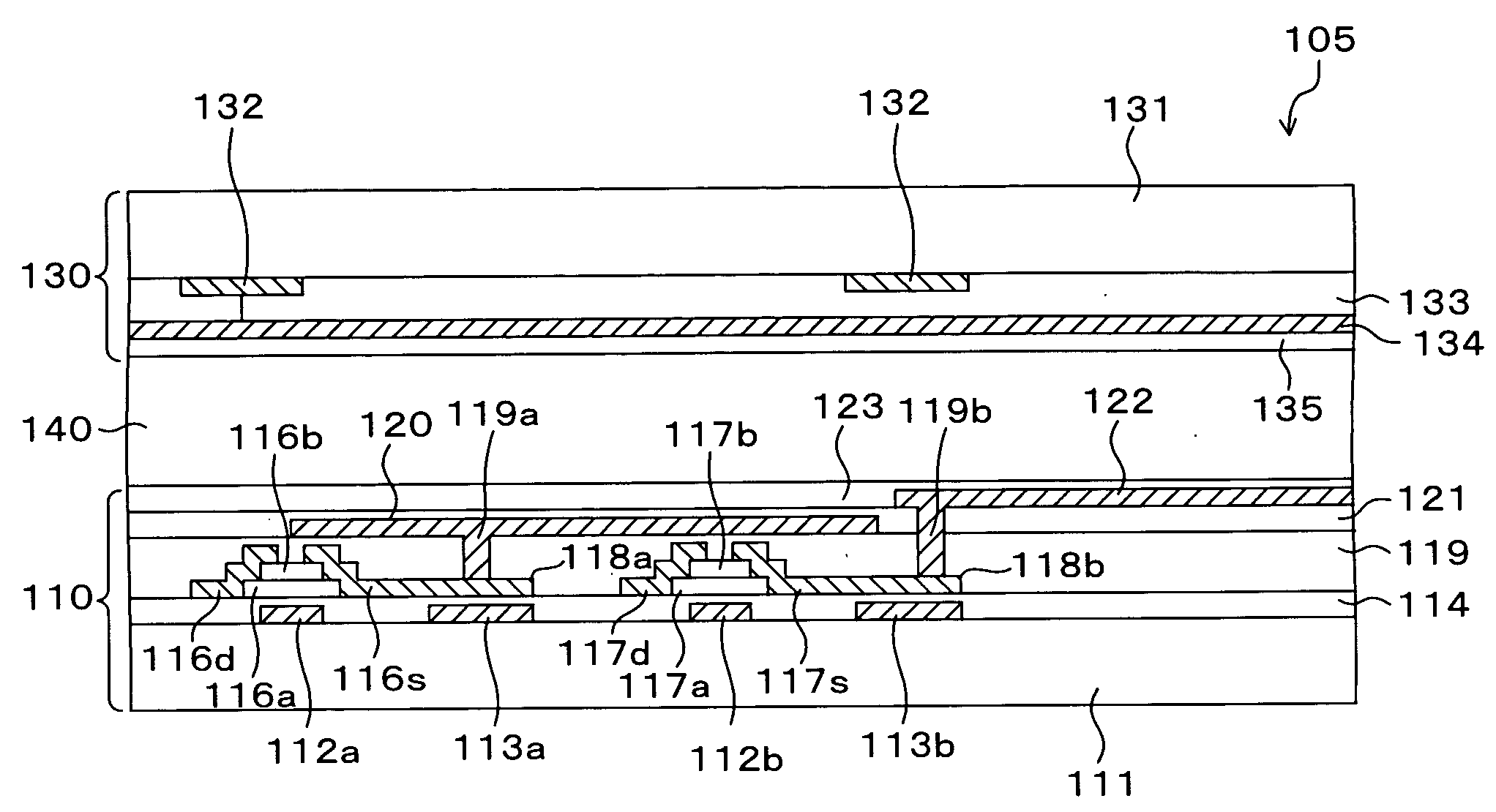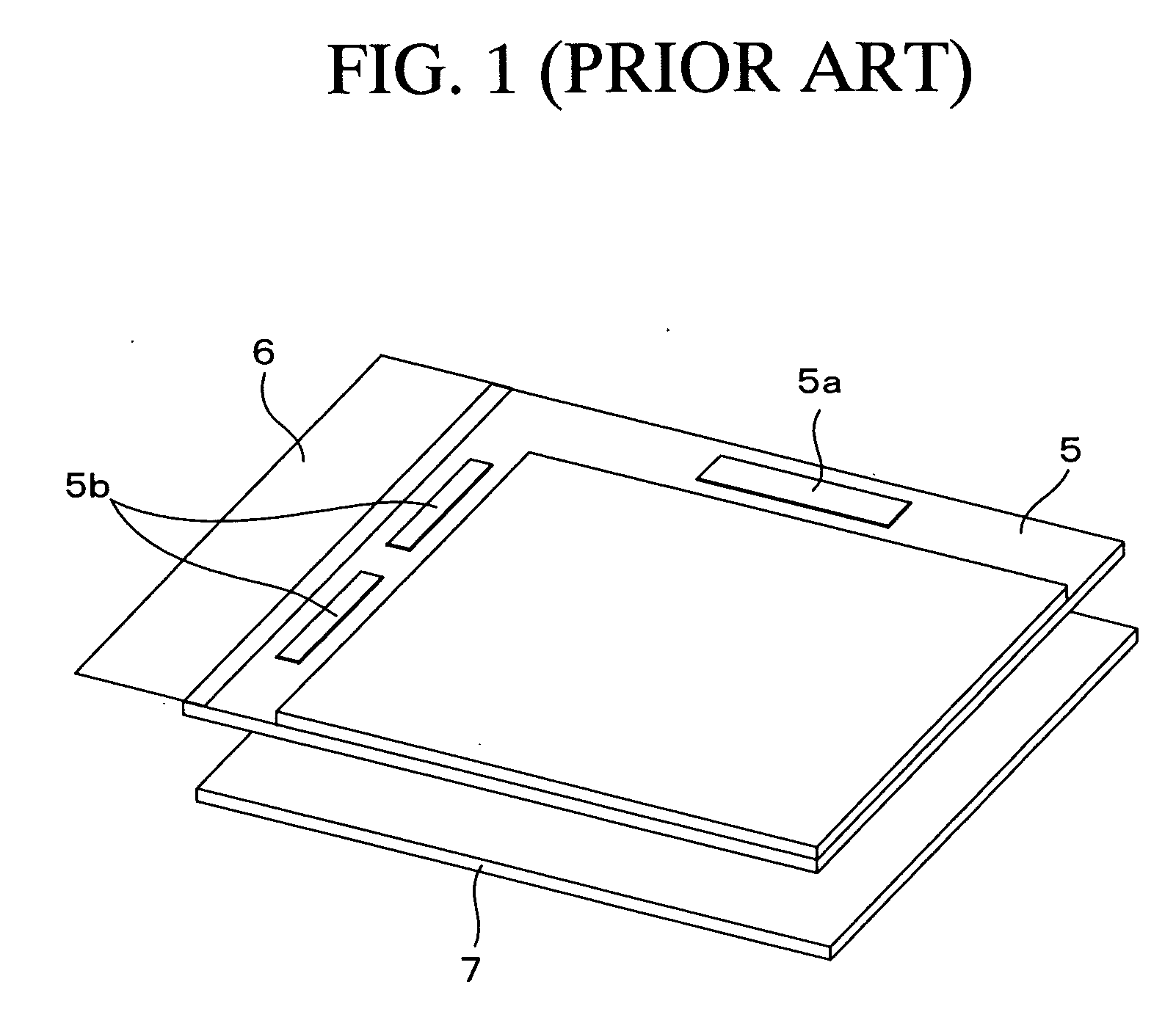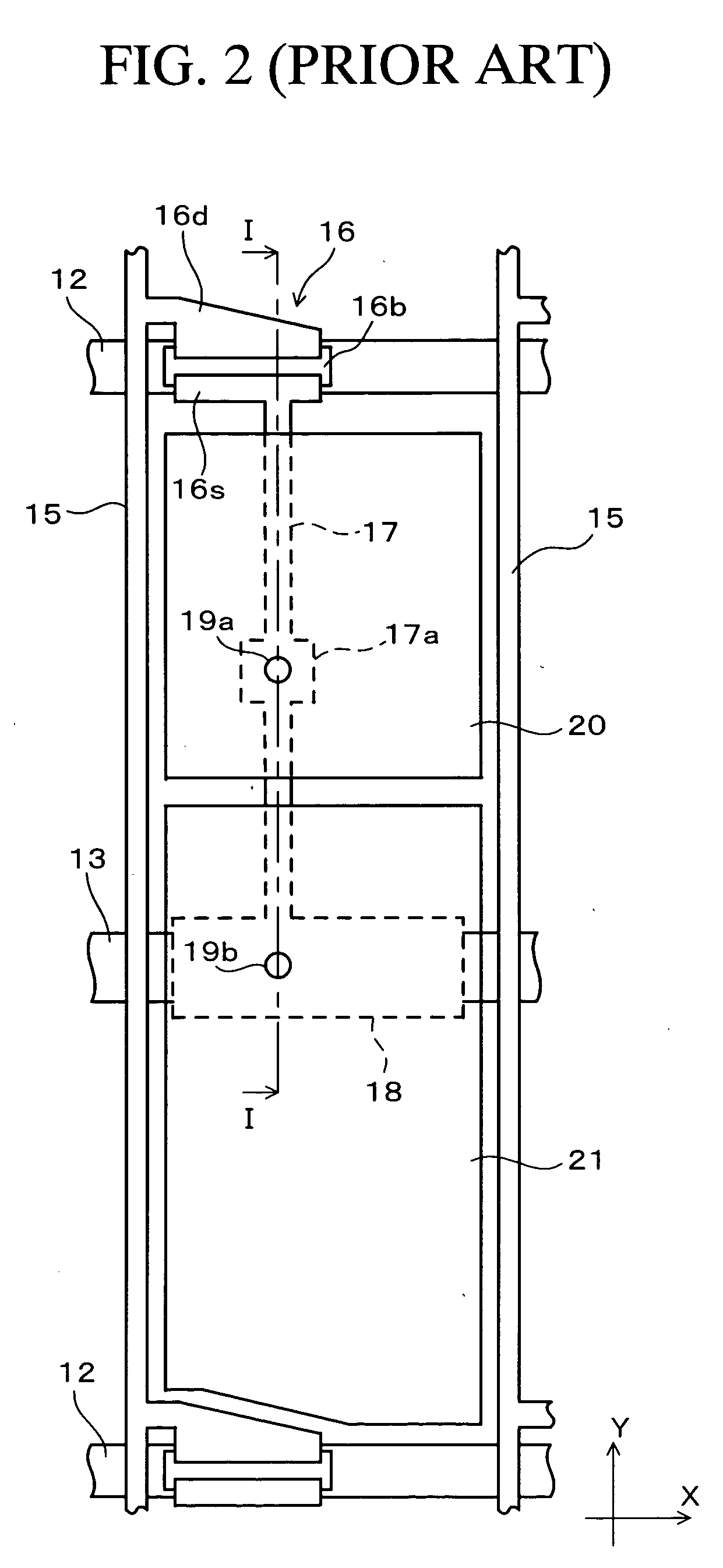Transflective liquid crystal display device
- Summary
- Abstract
- Description
- Claims
- Application Information
AI Technical Summary
Benefits of technology
Problems solved by technology
Method used
Image
Examples
first embodiment
[0045]FIG. 4 is a perspective view showing the configuration of a transflective liquid crystal display device of a first embodiment of the present invention. FIG. 5 is a block diagram showing the circuit configuration of the same transflective liquid crystal display device. Note that, in this embodiment, a description will be given of an example in which the present invention is applied to a VA mode transflective liquid crystal display device.
[0046] As shown in FIG. 4, the transflective liquid crystal display device of this embodiment includes a liquid crystal panel 105, a drive circuit board 106 connected to the liquid crystal panel 105, a backlight unit 107 placed on one surface side of the liquid crystal panel 105 (under the liquid crystal panel 105 in FIG. 4), and a pair of circularly polarizing plates (not shown) placed to sandwich the liquid crystal panel 105.
[0047] As shown in FIG. 5, a drive circuit which drives the liquid crystal panel 105 includes a control unit 100, a v...
second embodiment
[0082]FIG. 11 is a plan view showing a transflective liquid crystal display device of a second embodiment of the present invention. In FIG. 11, the same components as in FIG. 6 are denoted by the same numerals, and the detailed description thereof will be omitted.
[0083] In this embodiment, the source electrode 116s of the first TFT 116 is electrically connected to a transparent electrode 203 via a contact hole 202a. The first auxiliary capacitor bus line 113a and a first auxiliary capacitor electrode 201a are placed below the transparent electrode 203. The first auxiliary capacitor electrode 201a is electrically connected to the transparent electrode 203 via a contact hole 202b. The source electrode 117s of the second TFT 117 is connected to a second auxiliary capacitor electrode 201b. The second auxiliary capacitor electrode 201b is electrically connected to a reflective electrode 204 via a contact hole 202c. All of the TFT 117, the second gate bus line 112b, the second auxiliary ...
third embodiment
[0085]FIG. 12 is a block diagram showing the configuration of a transflective liquid crystal display device of a third embodiment of the present invention. In FIG. 12, the same components as in FIG. 5 are denoted by the same numerals, and the detailed description thereof will be omitted.
[0086] In the first embodiment shown in FIG. 5, gate signals to be supplied to the first and second gate bus lines 112a and 112b are generated in such a manner that the signals outputted from the data driver 103 are switched to each other by the data signal selection switches GSW. In this case, however, the gate signal selection switches GSW are required and general-purpose gate drivers cannot be used.
[0087] Accordingly, as shown in FIG. 12, two general-purpose gate drivers 211a and 211b are used, and these general-purpose gate drivers 211a and 211b are driven by use of timing signals C3 and C4, which are synchronized with each other. In this way, during one horizontal synchronization period, the g...
PUM
 Login to View More
Login to View More Abstract
Description
Claims
Application Information
 Login to View More
Login to View More - R&D
- Intellectual Property
- Life Sciences
- Materials
- Tech Scout
- Unparalleled Data Quality
- Higher Quality Content
- 60% Fewer Hallucinations
Browse by: Latest US Patents, China's latest patents, Technical Efficacy Thesaurus, Application Domain, Technology Topic, Popular Technical Reports.
© 2025 PatSnap. All rights reserved.Legal|Privacy policy|Modern Slavery Act Transparency Statement|Sitemap|About US| Contact US: help@patsnap.com



